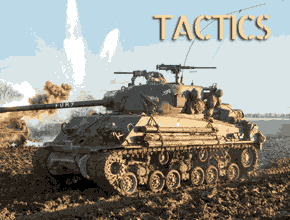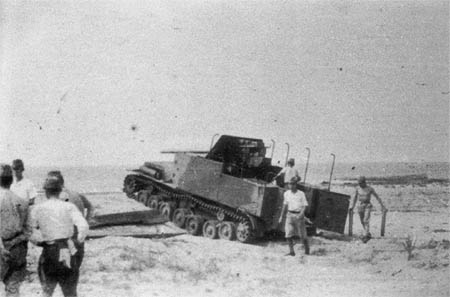
The Type 5 Na-To (五式砲戦車, or "Go-shiki hōsensha"), named by the Army the "Experimental 7.5cm self-propelled anti-tank gun Na-To" (Shisei nana-senchimētoru hantaisensha jisōhō Na-To) was the very last attempt by the Empire of Japan to create a self-propelled anti-tank gun. It was developed in mid-1945, thus production would not start as it was still prepared by the late summer in the closing days of the war.
Design of the Na-To
Development
At the end of the Pacific War, the Japanese field staff was well aware there was nothing in their inventory to stop the latest US tanks fielded by the Allies, the US in particular, having already a tasted of these at Okinawa. There was still an official tank hunter, the Type 3 Ho-Ni III, based on the Type 97 Chi-Ha Kai medium tank, with a casemate a la Marder, and a 75 mm (2.95 in) Type 3 tank gun. However the latter was a rechambered field gun and thus muzzle velocity was a meagre 683 m/s (2,241 ft/s). In theory and with some luck it could disable a M4 Sherman or a M3/M5 Stuart. Problem, only 30 had been delivered, all stuck un the defence of the home island.So, through in part German intel about the latest allied tanks, a new design was prepared around a better gun. Development was rushed through on a new design completed in the spring of 1945, based on the fully tracked Type 4 armored medium tracked carrier, derived also into the Type 4 Ha-To self-propelled mortar that never met production. The core of the design was its main gun, the Type 5 75 mm tank gun. The Japanese Army immediately issued an order for 200, to be completed in the summer of 1945. However, by that time production fell through due to acute material shortages, and heavy bombing of all facilities and factories, total disruption of communication lines courtesy of the combination of TF38/58 aviation and US submarines. Still tested in August 1945, it completely missed World War II.
General Layout
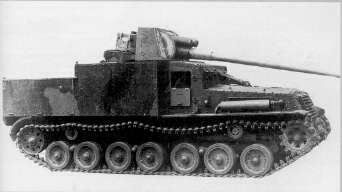 The Na-To used to gain time the already existing chassis and superstructure of the Type 4 Chi-So armored medium tracked carrier. The latter was a Japanese fully tracked troop carrier with an armoured cab forward and open cab aft, with framing and tarpaulin using a chassis derived from the chassis of the medium Type 4 Chi-To tank. The Type 4 Chi-So went from troop carrier to ammunition carrier, but still could carry men, like the servants of a towed artillery. In may ways it recalled the Ho-Ki armored troop transport. However that late into the war, with all disruption and low priority only six chassis were produced, none ever was operational. Instead two were converted in self-propelled artillery, the Ha-To and Na-To.
The Na-To used to gain time the already existing chassis and superstructure of the Type 4 Chi-So armored medium tracked carrier. The latter was a Japanese fully tracked troop carrier with an armoured cab forward and open cab aft, with framing and tarpaulin using a chassis derived from the chassis of the medium Type 4 Chi-To tank. The Type 4 Chi-So went from troop carrier to ammunition carrier, but still could carry men, like the servants of a towed artillery. In may ways it recalled the Ho-Ki armored troop transport. However that late into the war, with all disruption and low priority only six chassis were produced, none ever was operational. Instead two were converted in self-propelled artillery, the Ha-To and Na-To.
The tank destroyer Type 5 Na-To, which only remained in prototype state had the same superstructure, retained the open top and rear, but also kept the original enclosed armored drivers cab. The only true addition was a shielded platform for the main gun, Type 5 75 mm tank gun, samed planned for the Type 4 Chi-To, derived from the Type 4 75 mm AA gun. See below. Armour was light, protecting against rifle fire and shrapnel, at best 12 mm on the nose. The gun shield was presumably protected the same and the armour was riveted. The powerplant was unchanged, the same Diesel Engine which developed 165 HP at 2000 rpm, same drivetrained, meaning the extra weight caused some penalty, although it was designed to carry 3t ammunition and still can reach 40 kph on field tests. The crew amounted to 7: A driver and a commander on the cab forward and the remaining five gun servant in the rear compartment. There was no small arms close protection.
Armament: Type 5 75 mm Tank Gun
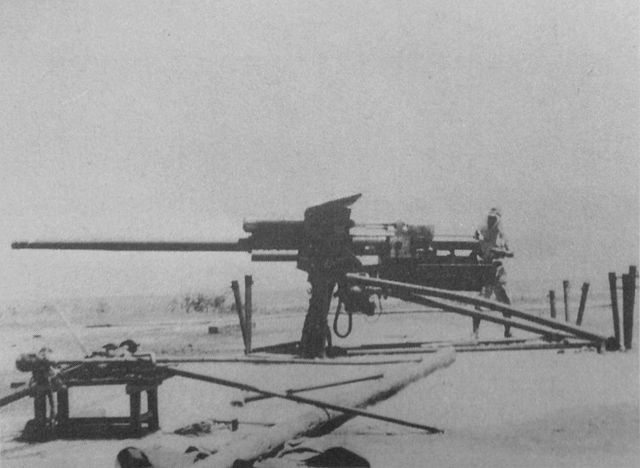
The Type 5 75 mm tank gun was designed to be the main armament of the Type 4 Chi-To medium tank. This became one of the largest tank guns ever fitted on a Japanese tank. But the late-war shortage meant delays so just two were ever mounted in Type 4 Chi-To prototypes, neither of which saw combat. It was also used in the prototype Type 5 Chi-Ri medium tank and Type 5 Na-To tank destroyer. At first it was planned for the only true Japanese medium production tank, Type 3 Chi-Nu. Testing started by late-1944.
This long-barreled 75 mm L/56.4 (4.23 m) tank gun was a variant of the Type 4 75 mm AA gun produced from 1943. The prototype was tested at the Osaka Army Arsenal, two more were completed in July 1944. Modifications including removing the semi-automatic loader, adding a balance weight, all by October 1944. It was designed to be mounted in the large hexagonal turret of the Type 4 Chi-To, in which it could elevated to +20 degrees.
Testing was performed for armour penetration ability in many conditions, including armour plates. Asessessment by the Imperial Guards 3rd Division was that its armor-piercing shells 75 TA at 1000 m could defeat 100 mm. By 9 March 1945, a shooting at the Fuji Susono Training Area used 22 prototype Type 4 HE shells and two Type 3 AA shells but the firing system malfunctioned. From 17 to 19 March it was used inside a prototype cast turret with the long II barrel mounted on a prototype for firning at the Irago Range. It fired no less than 72 Type 1 AP (armor-piercing) shells, 68 Type 4 HE shells at a muzzle velocity of 821 m/s or 819 m/s with the Type 4 AP and the General Staff concluded, it could defeat a M4 tank frontally at 1000 m, but recommended rear or side shots.
It was mounted into a prototype Type 5 Chi-R, but also the prototype Type 5 Na-To tank destroyer under a simple mask, leaving the crew partly exposed, albeit they were somewhat protected inside the walls of the open topped rera compartment. Tests with the armament were effective in mid-1945. The Type 5 Na-To tank destroyer was needed to defend key points of the Japanese home islands against a projected Allied Invasion, operaiton Olympic. But at V-Day on 1 August 1915 only two units had been completed and field tested.
Type 5 Na-To specifications | |
| Dimensions | 5.80 x 2.40 x 2.75 meters |
| Total weight, battle ready | 15 tonnes |
| Crew | 7 |
| Propulsion | Diesel 165 HP/2000 rpm |
| Speed | 40 kph |
| Armor | 12 mm max (0.5 in) |
| Armament | Type 5 75 mm tank gun |
| Range | c200 km (160 miles) |
| Total production | 2 prototypes for field tests |
Gallery
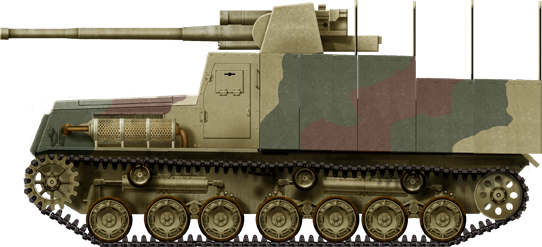
Author's Illustration
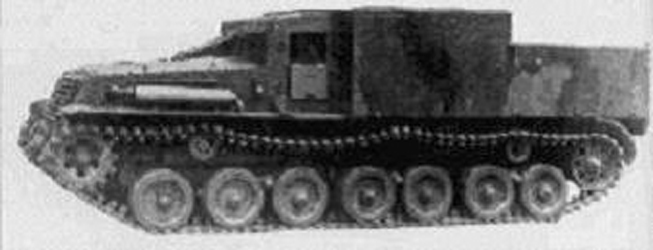
Type 4 Ha-To used as base
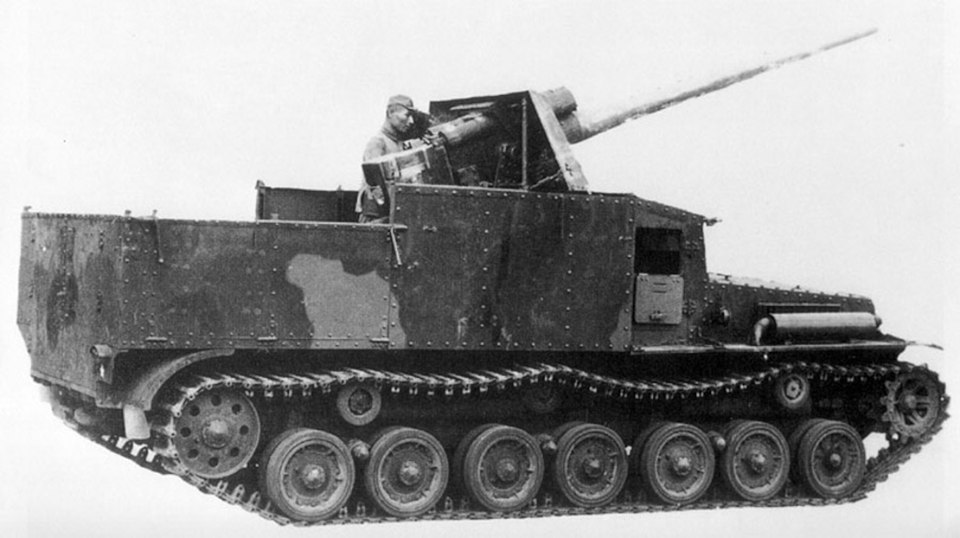
Side View

In Field Tests
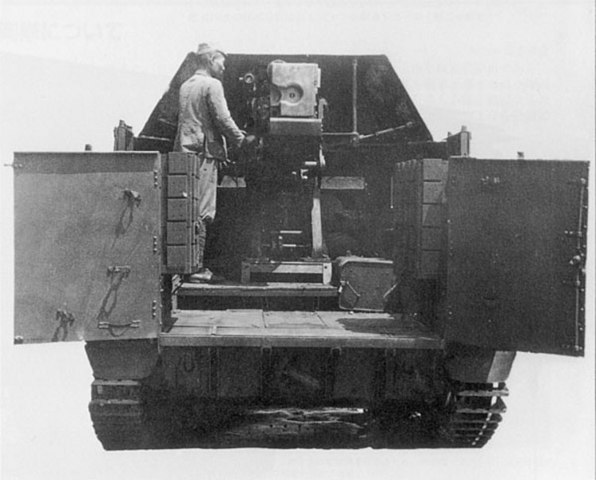
Rear View
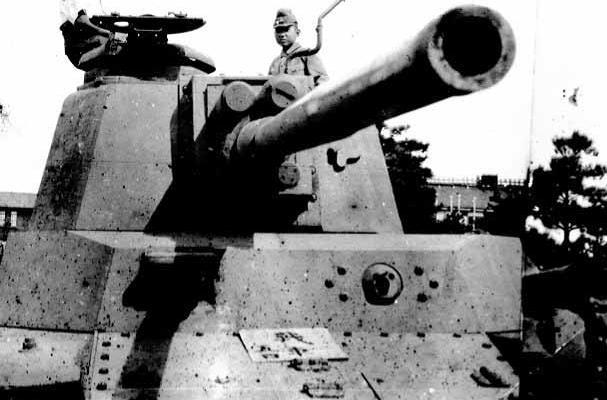
Same gun, front of a Type 4 Chi-To
Sources
Tomczyk, Andrzej (2005). Japanese Armor Vol. 4, 4 AJ Press. Tomczyk, Andrzej (2007).Zaloga, Steven J. (2007). Japanese Tanks 1939-45. Osprey
ja.wikipedia.org
en.wikipedia.org
takihomepage.web.fc2.com
globalsecurity.org
armedconflicts.com
Model Kits
ww2db.com
ikazuchisen.wordpress.com
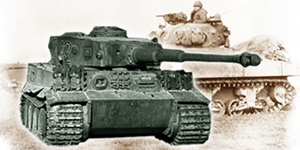
WW2 Tanks




























WW2 tanks posters
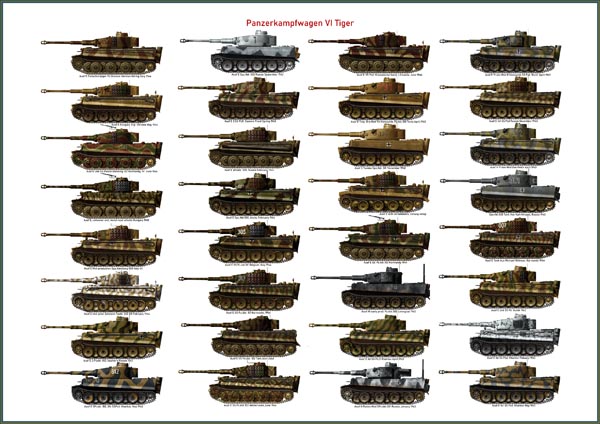
All Tiger tanks liveries.
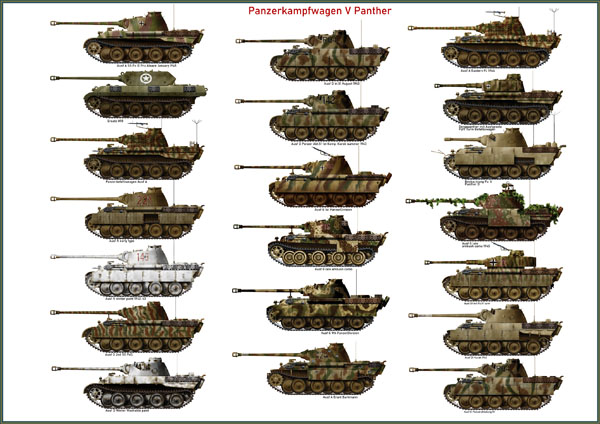
Panther liveries and variants
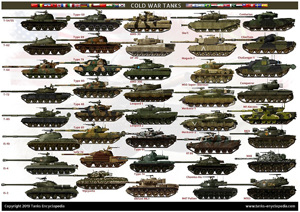
WW2 Armour - All tanks
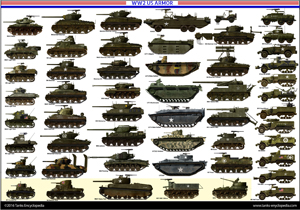
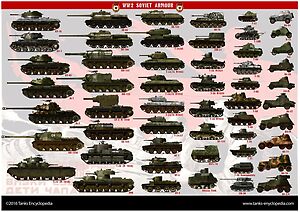





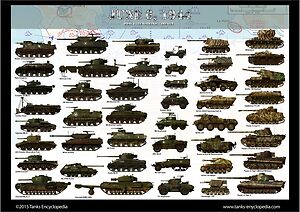



Tanks aces and single tanks series

Find more there
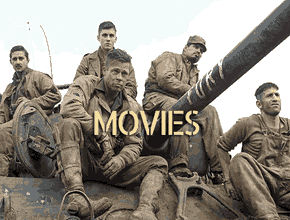
Museums, Movies, Books & Games
The Tanks and Armor in pop culture
Tanks and armored vehicles in general are only really grasped when seen first person: The mass, the scale, it's all there. Explore also the way tanks were covered in the movie industry, in books and in video games.Movies:
Best tanks movie on warhistoryonline.com
On imdb.com
On bestsimilar.com/
miltours.com
liveabout.com/
watchmojo.com
Video Games:
pcgamesn.com
historyhit.com
levvvel.com
vg247.com/best-tank-games
mmobomb.com/
alienwarearena.com
